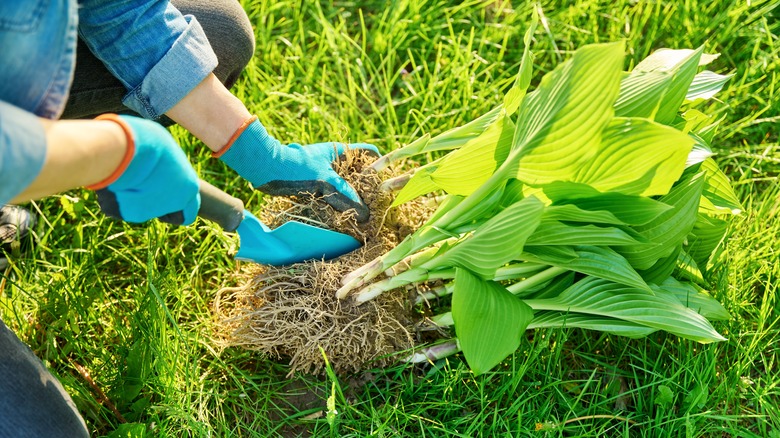Being a top-notch home gardener requires a significant amount of dedication plus money. And if you get excited at the prospect of taking one plant and turning it into several others (similar to nurturing the journey from seed to full-grown cucumbers), then you’ll probably like getting the best possible value from all your plant-related investments. Outdoor planters increase your home’s curb appeal, but if you buy them pre-populated with several plants, you’ll be paying for someone else’s design expertise. However, with this clever hack, you can save money by purchasing larger plants at the nursery, dividing them by hand, and replanting them into multiple planters. Taking hosta as an example, buying one could cost from $35 to $45 at Home Depot, but dividing it into three new baby plants could cost a little over ten bucks each.
Before you race to the store and fall in love with a particular plant species, you should know that not all plants can be divided. Generally speaking, aside from having roots, they need to grow in a clump-like fashion. Perennial flowers like coral bells, geraniums, daylilies, and garden phlox are examples of easily divided plants. Bulbs and tubers that divide well include dahlias and hostas. And then succulents like some cacti and aloe are also great candidates.
How to divide plants the right way

If you’re working with two or more planters, visualize in your mind how much each planter holds, then purchase three or four varieties of plants of varying heights and complementary colors. A good rule of thumb as you divide the plants (steps to follow) is to make sure that you break up any plants with an especially dense or compacted root system with your fingers or scissors. This step is important because it will enable them to drink water much better.
You’ve already consulted with your pal who works at the nursery and got the right soil and fertilizer for the plants you’re about to divide and recombine into planters. You found great planters, and you’ll also need a soil knife or garden-worthy scissors and your digging tools. When you’re ready to divide the plants, you can tip the first plant over and out of its plastic pot. Visually inspect the plant and identify separate clumps or shoots — that’s where you’ll divide it. Although using just your hands is fine, you’ll most likely need a knife or scissors to help you penetrate the root systems to avoid damaging the plants. Assign each individual plant to a planter, and voila, you’ve got a professional-looking, well-designed planter for a whole lot less money.



